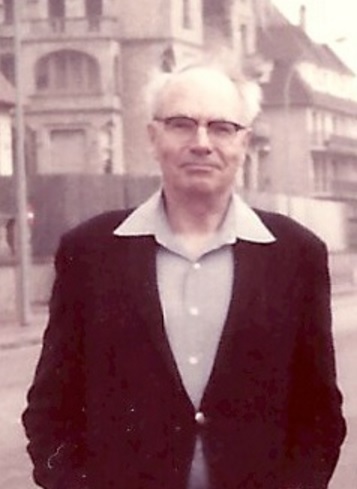Carroll L. Wilson
The Jacob Hill Inn in Seekonk has a long history. About 40 years ago, before it was an inn, it was owned by Carroll L. Wilson and his wife, Mary. Wilson was “the first General Manager of the US Atomic Energy Commission.”1 Wilson was a graduate of MIT, class of 1932. His expertise in the field of atomic science made him sought-after during World War II. In 1941, Wilson accompanied James B. Conant on a visit to England, where they met Churchill and King George VI, and discussed atomic science, and perhaps radar and synthetic rubber.

Carroll L. Wilson
In 1959, Wilson joined the faculty of MIT’s Sloan School of Management, and remained there for more than 20 years.
| He used MIT as a base while demonstrating his skills as an initiator of meetings (both national and international), a link among policy-makers, an assembler of information, and a molder of world opinion on major issues such as energy supply, global climate change, and alternatives to nuclear arms.
Never a traditional classroom teacher, Wilson involved his students and colleagues in his world, and many of them say he permanently changed their lives.
Wilson then turned to larger issues, pioneering a new format for studying and publicizing major scientific problems in world development. In 1970, for the first study, he assembled a multi-disciplinary group that produced, in one month, Man’s Impact on the Global Environment. The study was an important catalyst of debate within the U.S. on the greenhouse effect and other major environmental consequences of technology, including the SST. The following year Wilson brought together 35 atmospheric scientists from 15 countries in Stockholm to produce Inadvertent Climate Modification: Report of the Study of Man’s Impact on Climate. Organization of the World Coal Study began in 1978, and that Wilson-led effort produced a report in 1980 entitled “Coal: Bridge to the Future.” The essence of that study’s conclusion was that precious oil could be saved by using coal in ways that were environmentally sound. When Wilson died of leukemia in 1982, he was ostensibly retired, but in fact he was fully engaged in another of his classic studies, this time on conventional weapons as an alternative to the nuclear threat in NATO countries.2 |
Joseph W. Martin, Jr.
From 1925 to 1967, Seekonk was represented in the U.S. House of Representatives by Joseph W. Martin, Jr. (1884-1968). Martin was born and raised in nearby North Attleboro, and he’s buried there. In his early years, he was a paper-boy, delivering the Evening Chronicle, which later became the Sun Chronicle. He eventually became managing editor of the Evening Chronicle, and finally publisher.
| In his autobiography My First Fifty Years in Politics, Martin described the North Attleboro where he was reared: “I made still more friends as a delivery boy for the North Attleboro Evening Chronicle. Our world was much smaller and more intimate then than it is now [1960]. The population of the town was only four thousand, and it seemed that everyone knew everyone else. The men and women were more disposed then than they are today to give a young fellow a lift when he was starting out. No one bothers anymore. People are colder, more indifferent than they used to be.” |
Martin was the leader of the House Republicans, and the only Republican to serve as Speaker of the House between 1931 and 1995. Martin was a delegate to the 1916 Republican Convention, the Chairman of five other Republican conventions, and the Chairman of the Republican National Committee. He was often considered as a Republican nominee for President. In 1940, he was the campaign manager for the Republican nominee for President, Wendell Willkie. Apparently there was a campaign function at the Jacob Hill Inn, which was then a hunt club.
When Martin first ran for office, he campaigned without a car. He said of his 1911 campaign, “A nickel got me to Seekonk on the trolley in ample time to address a meeting.” Before serving in the House, he served in the Massachusetts legislature. “I served in the Massachusetts legislature with Calvin Coolidge; a close bond developed between us that endured throughout his years in the White House.”4
© L. James Hammond 2017
feedback
home page
| Footnotes | |
| 1. | Click here for a Wikipedia article that mentions Carroll Wilson, here for an article on Wilson, here for an obituary. back |
| 2. | MIT web page back |
| 3. | Another MIT web page back |
| 4. | See Boxing the Kangaroo: A Reporter’s Memoir, by Robert J. Donovan, p. 83 back |